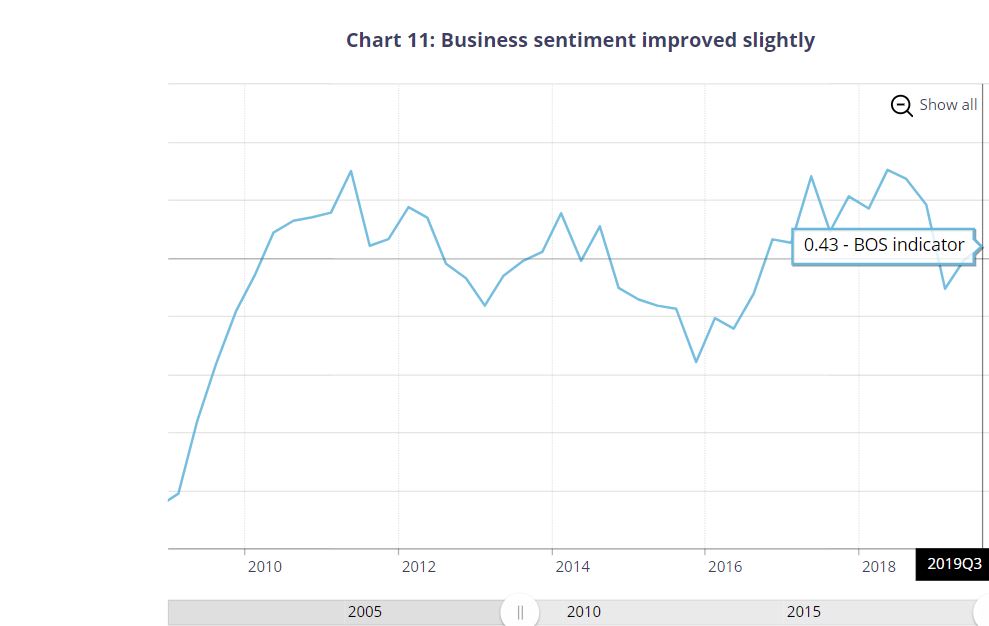
By Michael O’Neill
The 2002 Steven Spielberg film “Minority Report” and the 2019 Canada “Minority Government” have a key theme in common. Both try to prevent future events from occurring by pre-emptive actions. In the film, a fictional police department stops murders before they occur. In the Canada version, a Liberal minority government will prevent global climate change by increasing budget deficits. The difference is that film-goers voluntarily part with their money to see the show, while the Canadian tax-payers are coerced.
There have been three minority governments since 2004, and they didn’t have much (if any) bearing on the currency market. That may still be the case with Justin Trudeau’s Liberal minority.
The Liberals needed 170 seats for a majority and won only 157. The perennial also-ran NDP party, led by Jagmeet Singh lost 20 seats (compared to the 2015 result) and finished with 24. Yves-Francois Blanchet’s Bloc Quebecois went from 10 seats to 32. Gerald Butts and Prime Minister Justin Trudeau may think they are running the government, but they will be “do si do-ing” and “weaving the gnat” in the 43rd Parliament square dance, while Jagmeet and Yves-Francois call the steps. Trudeau will need the support of one of those party’s in order to enact any legislation.
Those results don’t bode well for the fiscal conservatives. The NDP election budget proposed a $32.7 billion deficit by 2020 while the Liberals forecast a $27.4 billion budget deficit. The NDP didn’t even consider a balanced budget and Prime Minister Trudeau believes that budgets balance themselves.
However, many pundits and economists suggest worrying about deficits is a waste of time. Canada’s Triple-A bond rating isn’t in question, especially when compared to the United States. The US federal debt-to-GDP ratio is 77% while Canada’s is a mere 31%. JPMorgan currency strategists argue that debt sustainability is not an issue for Canada.
Canadian businesses are not concerned about government deficits at this time. The latest Bank of Canada Business Outlook Survey was positive even though it was conducted during the heart of the election campaign (between August 20 and September 13). The campaigning didn’t dampen their outlook, and the ongoing US/China trade war barely made a ripple. The Business Outlook Survey Indicator (a measure capturing common movements from main BOS questions) rose 0.43% which is a tad above its historical average.
Chart: Business Outlook Survey Indicator

Source: Bank of Canada
The election results didn’t affect the Canadian dollar, and the Business Outlook Survey only provided a modicum of support. The BOS results were in line with the positive sentiment after a series of somewhat robust domestic economic releases. Weaker than expected Retail Sales data, released October 22, was largely ignored as the results were from August, and likely exacerbated by August holidays.
Canada and Canadians are often perceived to be both polite and bland. That sentiment seems to be reflected in the FX market. The Canadian dollar is the best performing major G-10 currency since the Toronto open on January 2, rising 3.9%. No other currency is even close. It is a sharp contrast to the Antipodean currencies. The New Zealand dollar lost 4.5%, and the Australian dollar dropped 2.4%.
A key reason for the Loonie’s outperformance is interest rates. Canadian rates are expected to be left unchanged at 1.75% at the October 30 monetary policy meeting. Meanwhile, rates around the world are falling.
The Reserve Bank of Australia chopped its benchmark Overnight Cash Rate to 0.75% at the beginning of the month and has a dovish bias. New Zealand is in the same boat. The Reserve Bank of New Zealand’s slashed its OCR by 0.50% to 1.00% on August 7. The European Central Bank renewed its quantitative easing program last month, and it trimmed its deposit rate to -0.50% from -0.40%. The Fed is widely expected to lower its benchmark fed funds rate at its October 30 meeting.
Bland Canada is looking as attractive as a “three dressed up as a nine.”
Canada survived the Nafta trade storm and it appears to be better positioned than the antipodean currencies to weather the US/China trade war, thanks to the new USMC agreement on trade.
The ongoing Brexit drama has sparked fresh demand for so-called riskier assets thanks to dwindling risks that the UK will leave the European Union without a deal. The positive sentiment led to broad US dollar selling in October, giving the Loonie a lift.
The Canadian dollar fundamentals are mostly sunshine and unicorns, and the short-term USDCAD technicals are rosy as well. The USDCAD downtrend which began on October 9 following the break of support at 1.3280 has been drifting lower and trying to grind through support in the 1.3040-80 zone. If successful, it targets the 1.2980-1.3010 area, representing the long term uptrend line from August 2012, on a monthly chart. A decisive break will extend losses to 1.2728, (78.5 US cents to $1 CAD)
Negative risks still abound. Brexit’s October 31 deadline is looking rather fluid. The US/China trade talks could go-pear shaped at the drop of a tweet. China could resort to a “Tiananmen Square” style solution to the Hong Kong protests. The 11+ year Wall Street rally seems to be defying gravity and is well-overdo for a corrective sell-off.
The Canadian dollar Minority Report suggests that external macroeconomic forces are far more important to Canadian dollar direction than a Liberal minority government.





